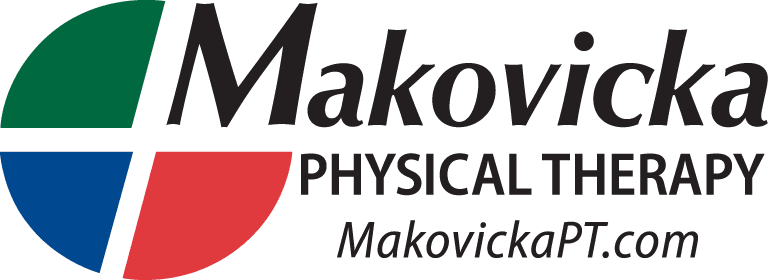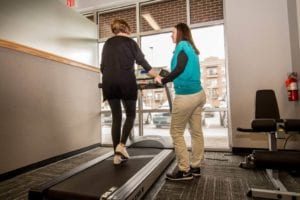As we get older and with certain neurological conditions the way that we walk can change. Those gait impairments can increase your risk of falling and cause pain in other parts of your body due to imbalances while walking. Physical therapy can be an important component in helping decrease your risk of falling and improve the way that you walk.
Gait and balance impairments can be caused by a number of different diagnoses. During your initial visit, a physical therapist will evaluate you and come up with a plan of care to address your gait and balance impairments.
Common causes of gait and balance impairments are pain, muscle weakness, foot drop, and numbness/tingling in your legs and/or feet. Inner ear and central nervous system disorders can also lead to balance/gait impairments. Other disorders that can lead to gait and balance deficits include Parkinson’s Disease, stroke, Multiple Sclerosis, peripheral neuropathy, Meniere’s disease, and arthritis.
Exercise is a key component of helping with gait and balance impairments. Physical therapy can address muscle weakness by working on strengthening muscles that are weakened. Muscles typically involved with gait abnormalities include core/back muscles, quadriceps, hamstrings, glutes, and anterior tibialis. Exercise will also help improve overall endurance which will help with the energy needed for daily walking and activities. In addition to strengthening stretching exercises may also be necessary for tight muscles impacting your gait.
Inner ear and central nervous system disorders can also be a leading cause of balance and gait deficits. Once diagnosed there are many exercises designated to help with gaze stabilization, habituation, and static and dynamic balance.
Gait training involves working on certain parts of the gait cycle in order to help improve gait mechanics. Some of the components of the gait cycle a physical therapist will look at is heel strike, step length, the standing phase of walking, as well as trunk/UE movements. A physical therapist may also recommend using an assistive device such as a walker or cane to assist with balance to decrease the risk of falls and improve gait mechanics. If a physical therapist recommends using an assistive device then they will also teach you how to use the device.
If you have experienced any of the above symptoms come and make an appointment with one of our experts to see how they can help.
Stacey Thompson, PTA

